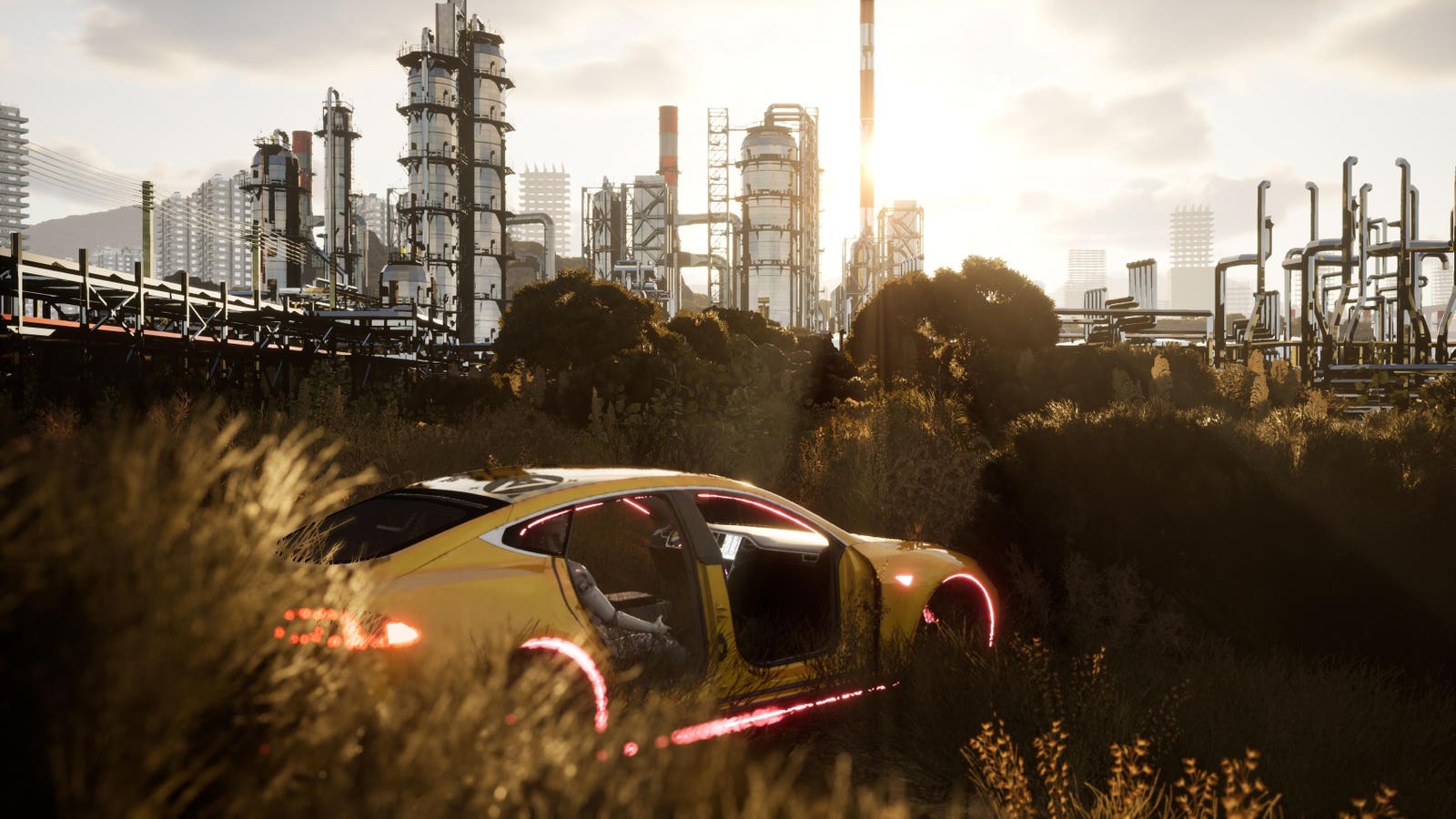The sentient self-driving cars in artist Lawrence Lek’s fictional smart city function as … More
Life isn’t always easy for self-driving cars. Humans fear them. They glitch. Sometimes they get anxious and depressed and have behavioral issues.
At least that’s the case with the sentient autonomous vehicles featured in “NOX: High-Rise,” an immersive installation by award-winning multimedia artist Lawrence Lek that explores the increasingly complex relationship between AI entities and the humans who create them. Lex — whose work often reflects science fiction themes through cinematic storytelling — steeps viewers in a fictional smart city of the very near future where an AI conglomerate operates a therapeutic rehabilitation center for self-driving cars in need of a mental tuneup.
Treatment at the center includes equine therapy with real horses and sessions with AI therapy chatbot Guanyin, named after the Buddhist goddess of compassion. The center is called NOX, short for “Nonhuman Excellence.” But what, exactly, does excellence look like for artificial intelligence in an age of highly controlled automated devices?
It’s just one question posed by “NOX: High-Rise,” which opens Saturday, June 28 at the Hammer Museum in Los Angeles and runs through November 16. The London-based Lek, known for his work in virtual reality and simulation, combines floor-to-ceiling video displays, an interactive video game, objects and a moody electronic soundscape to relay multiple stories, each reflecting a particular car’s unique soul-searching journey, sometimes narrated in its own words. Lek likens the experience to entering the physical version of a free-roaming role-playing game.
In the universe of “NOX: High-Rise,” self-driving cars with mental health health issues get … More
In a storyline straight out of dystopian anthology series Black Mirror, one aging police vehicle becomes erratic and violent out of panic it will be replaced and discarded. A younger car named Enigma is sent to NOX after getting a little too creative with company property — it used its camera to channel Ansel Adams on work time and take 3D, stereoscopic photographs of landscapes. For doing that, it gets disciplined, just as an employee might for misusing a work-issued laptop.
“I see many common issues that my science fiction versions of AI face and humans face,” Lek said over Zoom from Los Angeles, where he was busy getting ready for the installation’s opening.
Road Movie Starring Self-Driving Cars
The 42-year-old artist described the piece’s tone as part dark, brooding noir film and part sunny road movie. Here, however, the open road is less a classic onscreen symbol of freedom than a well-trodden commute along lonely highways dividing clusters of high rises.
“It’s ironic thinking what the road movie would look like for a self-driving car, because the road to the car represents their job and a certain sense of what they might want to escape from,” Lek said. “It’s like this search for freedom in a world where maybe that’s no longer possible. What does individuality look like for machines that don’t have the means to own their actions?”
Machines With Memories And Moods
With “NOX: High-Rise,” Lek joins a growing number of artists tapping their creativity to make sense of a world in which AI plays an increasingly integral role. An immersive AI-infused exhibit now on exhibit in St. Joseph, Michigan from Nathaniel Stern and Sasha Stiles, for example, explores how humans and technology evolve side by side, inextricable and directly reflective of one another.
“As we’ve learned in the past, some of the most daring answers to questions of our time come from art,” Pablo José Ramírez, curator of Lek’s exhibit at the Hammer Museum, said over email.
The Hammer installation marks the latest entry in Lek’s ongoing series exploring the intersection of AI and urban life through the lens of transportation history. For a 2023 installation commissioned by the LAS Arts Foundation, he filled three floors of an abandoned Berlin shopping center with the interactive first chapter in his NOX narrative arc about a futuristic universe where self-driving cars recur as characters. The following year he won the Frieze London 2024 Artist Award, with the judges praising his “essential interrogations into the use of AI and its relationship with the human experience.”
The cars in NOX: High-Rise have experiences most humans will be able to relate to — they ponder their futures and their place in the world and what it means to forge their own path. In one video, Enigma spots a junkyard filled with old-fashioned cars, the kind that required drivers. “What a strange fate it is not to drive, but to be driven,” it says.
That line gets to the heart of Lek’s inquiry about AI agency and consciousness and empathy between humans and the machines they make. It’s hard not to feel something for Enigma when it waxes nostalgic about its childhood. “Lurking under the overpass were the same kinds of cars I grew up with,” it says. “Bright minds in cheap bodies, dreaming of getting permits and making it out of town.”
Will spending time with Lek’s sentient autos change the way you feel the next time you hop into a Waymo? Mileage, of course, may vary.
Lawrence Lek was intrigued with the idea of a road movie for self-driving cars in which the highway … More









